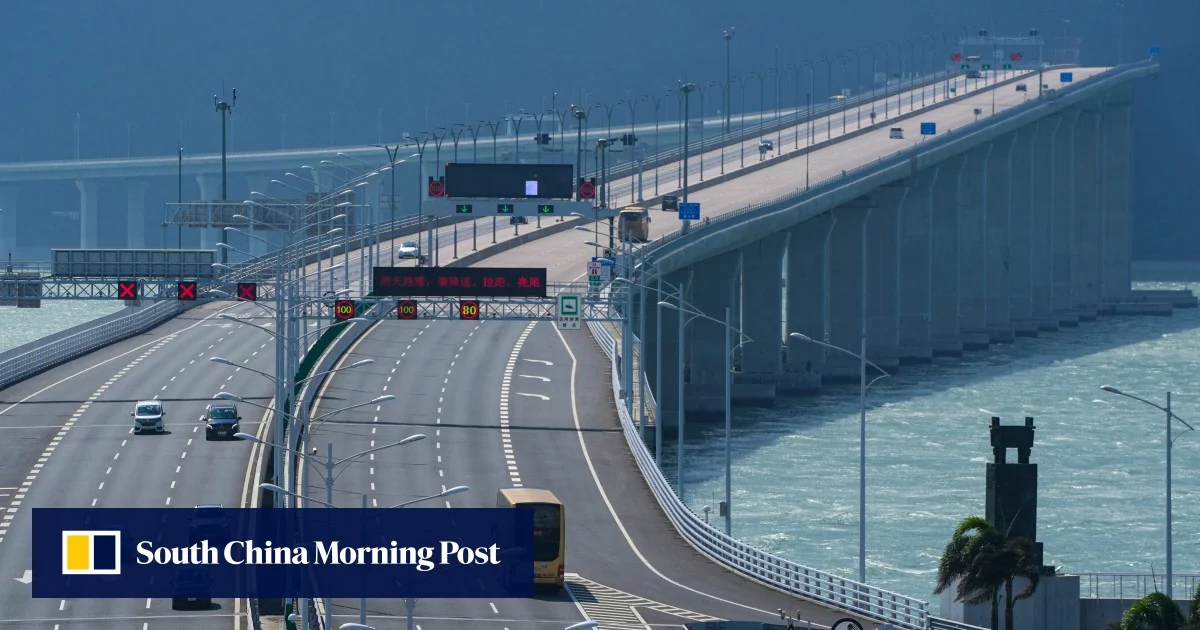Tuesday, May 27, 2025
Italy has just joined Switzerland, Germany, Spain, and the UK under a new US Travel Advisory—and the move has sparked global curiosity. Why now? What’s triggering this sudden shift in America’s stance toward these popular European destinations?
The US Travel Advisory, updated this week, raises serious questions for travelers, policy analysts, and frequent flyers alike. As tensions simmer across the continent and security concerns quietly escalate, the inclusion of Italy in this growing list sends a signal that cannot be ignored. Switzerland, often seen as Europe’s safest haven, is now part of this unfolding story.
Germany, Spain, and the UK—nations with millions of American visitors each year—are also under fresh scrutiny. With updated risk assessments, subtle warnings, and geopolitical undercurrents at play, this isn’t just routine bureaucracy. Something bigger is brewing. And if you’re planning to cross the Atlantic anytime soon, you’ll want to know exactly what’s going on.
In a sweeping update to its global travel guidelines, the U.S. Department of State has recently issued or refreshed travel advisories for several European nations, including Italy, Germany, Spain, Belgium, and the United Kingdom. The changes, which now place many popular destinations under a “Level 2 – Exercise Increased Caution” warning, are creating buzz — and some confusion — among American travelers planning their summer getaways.
But what exactly is going on, and should you cancel your plans? Let’s break it down.
Cautious Summer for European Travel
Europe is one of the most frequented regions for American tourists, especially during the warmer months. Picturesque cities, historical landmarks, and delicious cuisine make it an irresistible destination. However, recent geopolitical tensions, scattered civil unrest, and persistent concerns about terrorism have prompted the U.S. to reassess the risk levels of travel to several European countries.
As of late May 2025, travel advisories for Italy, Germany, Spain, Belgium, and the UK have all been bumped up to Level 2. This doesn’t mean you can’t travel to these destinations, but it does mean you’re being advised to stay alert, especially in crowded spaces or popular tourist spots.
Italy: Still Beautiful, But Be Alert
Italy’s advisory was quietly upgraded to Level 2 on May 23, 2025, citing risks of terrorism. The U.S. government notes that while no specific threats have been made, attacks could occur with little or no warning — particularly in areas known for large crowds, like museums, cathedrals, public squares, and transportation hubs.
Rome, Venice, Florence — these cities remain as enchanting as ever. But tourists are encouraged to practice increased vigilance. Consider avoiding peak hours in crowded places and stay tuned to local news or official embassy updates.
Germany and 🇪🇸 Spain: Warnings Reflect a Broader European Pattern
Germany and Spain — both magnets for cultural exploration — have also received similar advisories. Germany’s was refreshed on May 13, while Spain’s came just a day earlier.
The concerns are largely the same: terrorist attacks could occur without warning, and while European intelligence agencies remain on high alert, the unpredictability of lone-wolf attackers is what’s driving most of this caution.
Travelers should be especially careful during large events, protests, or in transit areas like airports and train stations. As always, a bit of precaution goes a long way in ensuring a safe trip.
Belgium: A Familiar Concern
Belgium is no stranger to travel advisories, having endured serious incidents in the past, including the 2016 Brussels bombings. Its inclusion in this advisory round reaffirms ongoing concern about terrorism and civil unrest.
While the country remains a beautiful and vibrant travel destination — think medieval towns, waffles, and world-famous beer — the U.S. is advising increased caution in crowded public areas and near government buildings.
United Kingdom: Northern Ireland Remains a Watchpoint
The UK advisory update, issued in early May, specifically highlights potential unrest in Northern Ireland. While mainland destinations like London, Manchester, and Edinburgh remain secure, parts of Northern Ireland can still experience isolated incidents of political violence related to long-standing sectarian divisions.
This doesn’t mean tourists should avoid the UK altogether, but it’s wise to be aware of regional dynamics. If your travels take you to Belfast or Derry, keep an eye on local advisories and avoid any political demonstrations or rallies.
Russia: A Level 4 Red Flag
Russia remains under a Level 4 advisory — the highest alert level — with the U.S. government explicitly recommending that citizens do not travel there. The reasons are clear: the ongoing war in Ukraine, internal instability, risk of arbitrary detention of U.S. citizens, and a lack of diplomatic support make Russia a no-go for American tourists right now.
Switzerland: A Safe Spot Amid Turmoil
Switzerland, however, offers a glimmer of calm. It remains at Level 1 — the lowest advisory level — suggesting normal precautions are sufficient. If you’re looking for a European destination with a reputation for safety and neutrality, Switzerland remains a solid bet.
So, Should You Cancel Your Trip?
The short answer? No — but travel smarter.
A Level 2 advisory is not a reason to panic or cancel your plans. It’s a reminder that while the risk is not acute, there is enough background concern to warrant increased awareness. These advisories are not travel bans; they are cautionary tools designed to inform and empower travelers.
Here’s what you should do before and during your trip:
✅ Enroll in STEP
The Smart Traveler Enrollment Program (STEP) by the U.S. government is free and allows the nearest embassy to contact you in case of an emergency.
✅ Stay Informed
Check local news and the official U.S. State Department site regularly for updates. Many European countries have alert systems you can follow in English.
✅ Avoid Risky Areas
Steer clear of demonstrations, political rallies, and large gatherings — especially those with a strong political or religious angle.
✅ Have a Plan B
Know the nearest embassy or consulate, and always have a way to reach emergency services. Also, ensure you have travel insurance that covers cancellations and medical emergencies.
Europe remains one of the most welcoming, enriching, and awe-inspiring continents you can explore. The updated travel advisories shouldn’t stop you from soaking in the culture, food, and history — but they should serve as a reminder to travel responsibly.
After all, the world is still open for adventure — just with a little more care and a lot more awareness.
Travel Disrupted: Updated May 2025 Advisories Reshape Global Tourism Landscape
As summer travel season heats up, the latest May 2025 travel advisories have landed—and they’re sending shockwaves through both travelers and the global tourism industry. The newest updates show a wide range of safety levels, from mild precautions to full travel warnings.
From Europe to Asia, South America to the Pacific, the guidance signals a changing world where safety, stability, and traveler readiness must go hand in hand.
This isn’t just about red tape. It’s about real-world risks. And for millions planning international vacations, the choices just got more complicated.
4 Countries Marked as “Do Not Travel”: Serious Caution Ahead
The most severe warnings—Level 4: Do Not Travel—have been issued or reaffirmed for Somalia, Venezuela, Burma (Myanmar), and Russia.
These advisories are not issued lightly. They reflect serious safety threats, from political instability and armed conflict to high levels of violent crime and breakdowns in infrastructure.
For tour operators, this is a hard stop. Most travel insurance providers will not cover trips to Level 4 destinations. Airlines and booking platforms are also seeing cancellations rise in response to these warnings.
For affected countries, this could mean millions in lost tourism revenue at a time when global recovery is still fragile.
Level 3 Alerts: “Reconsider Travel” Notices Gain Traction
Guyana and Trinidad and Tobago have now been placed under Level 3 advisories, urging travelers to reconsider plans due to emerging safety issues or instability in specific regions.
While not as restrictive as Level 4, Level 3 warnings carry weight. They often reflect targeted threats like gang violence, corruption, or unstable governance. These risks may not impact all travelers—but they affect perception and bookings dramatically.
Tourism boards in these countries will need to ramp up transparency and local security measures to restore traveler confidence quickly.
Level 2 Warnings Dominate: “Exercise Increased Caution” Around the Globe
A staggering number of countries now fall under Level 2: Exercise Increased Caution advisories. These include major tourism magnets like Italy, Belgium, Germany, Spain, Japan, United Kingdom, and Peru.
Level 2 is not a dealbreaker. It signals concerns that travelers should take seriously—ranging from petty crime to civil unrest or elevated terrorism threats. However, tourism remains active in these countries.
What matters is how travelers prepare. Staying updated, registering with embassies, and securing reliable insurance can help mitigate these moderate risks.
But this growing list also reveals something deeper: even destinations seen as “safe” are facing complex pressures in 2025. No region is immune.
Where It’s Still Safe: Level 1 Destinations Offer Some Relief
A few locations shine with Level 1: Exercise Normal Precautions status. These include Vanuatu, Liechtenstein, Switzerland, and Japan—all reflecting relative stability and efficient public services.
While no destination is without risk, these countries currently offer the highest level of travel confidence for cautious tourists and families.
Expect demand for flights, accommodations, and tours in these locations to rise in the coming months—especially as global travelers shift plans to prioritize safety.
Industry Repercussions: Routes, Bookings, and Budgets at Risk
These shifting advisories aren’t just bureaucratic updates. They have massive implications across the travel ecosystem.
Airlines may adjust routes and frequencies based on demand. Hotels in Level 2 or 3 destinations may need to lower prices or invest in traveler reassurance campaigns. Tour companies could pivot to destinations with clearer safety profiles.
Travel advisors, too, are feeling the pressure. With safety now a top concern, their role is more critical than ever—offering not just options, but informed guidance.
And governments of affected countries must act fast to counterbalance the impact. That means clear communication, strengthened emergency services, and support for communities that rely on tourism.
Traveler Behavior Shifting with Each Update
U.S. and European travelers, in particular, are reacting swiftly to advisories. Bookings to Level 1 destinations are climbing. Interest in “safer alternatives” to popular spots like Russia or Venezuela is growing.
Meanwhile, digital nomads and adventure travelers are becoming more selective. They’re vetting destinations for healthcare access, political stability, and crisis response capabilities, not just affordability or scenery.
As this awareness grows, expect new travel patterns to emerge—ones that favor preparedness over spontaneity, and resilience over reputation.
A Summer of Caution, Not Cancellation
Despite the alerts, travel is far from off the table. The May 2025 updates serve as a reminder, not a roadblock. With awareness, flexibility, and responsible planning, international travel can remain safe and rewarding.
But travelers—and the industry—must adapt. Risks are rising. Choices matter more. And the landscape of global mobility is becoming more sensitive, reactive, and informed than ever before.
Now is the time for action. Not panic. Travelers should use this data to empower better decisions. Airlines and hotels must use it to reinforce trust. And governments must use it to invest in safety, not silence.
Tags: airline route changes, ATC risks, Belgium, Canada, Cuba, germany, global travel advisories, guyana, international travel guidance, Italy, japan, Liechtenstein, May 2025 travel news, myanmar, Peru, Russia, Somalia, spain, Switzerland, Tajikistan, tourism policy, travel risk management, travel safety updates, Trinidad and Tobago, United Kingdom, United States, Vanuatu, Venezuela



